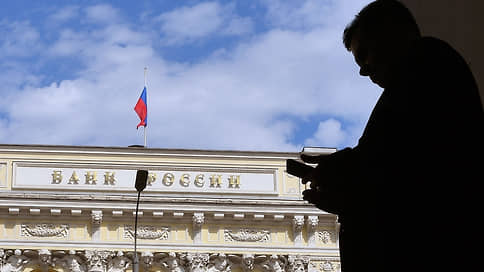The Central Bank raised the key rate from 7.5% to 8.5% per annum
[ad_1]

The Bank of Russia today raised the key rate by 100 basis points at once – from 7.5% to 8.5% per annum. The decision was made against the backdrop of increasing inflationary pressure due to the fact that the possibility of increasing production does not keep pace with the growth of domestic demand, and the accelerated pass-through of the weakening ruble into prices. At the same time, the Central Bank notes the completion of the stage of economic recovery and improved the forecast for GDP growth this year to 1.5-2.5%. Expecting inflation at the level of 5-6.5% this year, the Central Bank allows a further increase in the rate to return it to the target 4% in 2024.
Today the Board of Directors of the Central Bank raised the key rate – after keeping it at 7.5% for six consecutive meetings, the indicator was raised immediately by 100 basis points (b.p.), to 8.5% per annum. Recall that in early June, the Central Bank allowed the rate increase at the next meetings, and most analysts expected a 50 bp increase today. etc., although some did not rule out a step of 100 bp at once. P.
The Bank of Russia justified its decision by the dynamics of price growth: inflationary pressure is increasing and “manifests itself in an ever wider range of goods and services.”
Thus, the current annual inflation rate exceeded 4% and continues to grow, as does the annual rate, which rose to 3.6% on July 17 (after 3.3% in June and 2.5% in May). At the end of the year, the Central Bank expects inflation in the range of 5-6.5% (the forecast has been revised – previously it was expected to be 4.5-6.5%), and in 2024 it will return to 4%.
This dynamics is explained by the fact that the growth of domestic demand exceeds the production capacity in many industries (including due to limited free labor resources), as well as by the acceleration of the ruble depreciation pass-through to prices, which may turn out to be more pronounced than the baseline scenario assumed. These factors significantly increase pro-inflationary risks – among them, the Central Bank also singles out as the main one the “growing deviation of the Russian economy upwards from the balanced growth path”, which may become a problem if increased demand from the public sector persists with further growth in consumer demand supported by high rates of lending, growth in real wages and “adaptation of the population to the new structure of supply in commodity markets”.
Against the backdrop of the fact that the contribution of budget expenditures to the increase in domestic demand continues to grow, the Central Bank warns again: in the event of an additional expansion of the budget deficit, pro-inflationary risks will further increase, and then additional tightening of monetary policy will be required. Risks such as the impact of geopolitical tensions on the terms of foreign trade have not disappeared either: we are talking about the possibility of an additional weakening of demand for Russian exports against the backdrop of increased sanctions, as well as difficulties in logistics and financial calculations, resulting in an increase in the cost of imports.
Assessing economic activity, the Central Bank states that the recovery phase of the development of the Russian economy is “generally completed.”
At the same time, the heterogeneity of trends in different sectors remains: if the output in sectors oriented to domestic demand has reached or exceeded the pre-crisis level, then in those oriented to export it is restrained by the action of sanctions. By the end of the year, the Bank of Russia expects GDP growth at the level of 1.5-2.5%, thus improving the forecast (from 0.5-2%). In 2024, an increase of 0.5-2.5% is expected, in 2025 – 1-2%, and in 2026 – 1.5-2.5%.
The signal regarding further decisions on the key rate remained strong – the Central Bank admits the possibility of raising it at the next meetings to stabilize inflation near 4% in 2024 and beyond. The next meeting of the board of directors on the issue of the rate is scheduled for September 15. The average key rate forecast for 2024 has been raised from 6.5–7.5% to 8.5–9.5%.
[ad_2]
Source link





